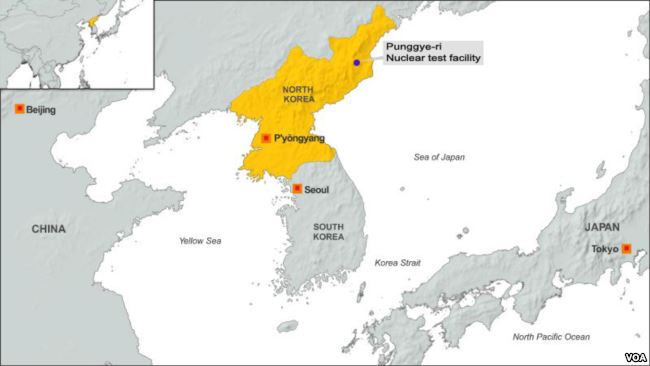Nuclear Weapons 320 - North Korean Tunnel Collapses At Nuclear Test Facility
When nuclear weapons are being developed, it is necessary to periodically test one to verify that the design works as intended. Since an international treaty was signed to prevent the testing of nuclear bombs above ground, nuclear armed nations have carried out nuclear tests underground. This is intended to prevent the leak of radioactive materials from the blast. It also serves to prevent potential enemies from analyzing the fallout from a bomb to understand the type and design of the bomb.
Over the past decade, North Korea has carried out a series of underground tests at their Punggye-ri nuclear testing site in the northwest part of the country. They have tunneled horizontally into Mt. Mantap and then dug deep holes into which test bombs are lowered and then detonated. As test were carried out, there were warning signs of damage to the geology around the mountain with landslides appearing on satellite photographs.
On September 3rd of this year, a bomb estimated to be equivalent to over one hundred thousand tons of TNT was detonated. Following the last test of a one hundred kiloton bomb, satellite images showed there were more landslides on and around the mountain. The Chinese have a network of one hundred seismic monitoring stations which pin-pointed the location of a series of earthquakes under Mt. Mantap. One of the quakes registered as 6.3 on the Richter Scale.
Recently, I posted an article about a meeting in Beijing on September 20 where Chinese geologists warned a delegation of North Korean scientists against carrying out any more nuclear tests under Mt. Mantap at the Punggye-ri nuclear testing site because they feared that the mountain had become unstable due to the stress of the five nuclear tests that had been conducted there.
The Chinese were worried that another test of a hydrogen bomb might cause the mountain to implode, cracking apart and leaking radioactive materials that could fall on China. The chair of the China Nuclear Society said that if the mountain collapsed there could be a major ecological disaster. He referred to the possibility as “taking the roof off.” He said that if the holes under the mountain were exposed, “many bad things will be let out. “A 100 kiloton bomb is a relatively large bomb. The North Korean government should stop the tests as they pose a huge threat not only to North Korea but to other countries, especially China.”
Shortly after the meeting, the North Koreans announced that they might detonate their next hydrogen bomb over the Pacific Ocean. This might be an indication that they took the warning from the Chinese seriously.
Now reports on Japanese TV say that a tunnel under Mt. Mantap has collapsed and trapped a hundred workers. When a rescue operation was mounted, another hundred died trying to reach the first hundred workers. All two hundred are believed to be dead. The exact dates of the two cave ins are not known as little detail has emerged from North Korea about the accident but it is believed that the date of the first tunnel collapse may have been on October 10th.
It appears that the Chinese geologists knew what they were talking about. It would be wise for the North Koreans to heed the warnings of the Chinese geologists. The Chinese said that they would consider extensive fallout over China from any North Korean nuclear test to be an act of war.
Punggye-ri nuclear test facility:
